DRIVE (Day 5 - part 1)
Today was going to be a long driving day of almost 475 miles. We got up early and savored our huge hotel breakfast. I had become an expert on the waffle maker by now.


We left downtown Roswell and were passing through some of the surrounding residential area when Joanne commented that she had just seen some very strange animals... deer, but not quite. We turned around and watched three pronghorn (MUCH closer than we had seen them earlier in Colorado) carefully cross the road. Unlike the female we had seen before, there were three males, as indicated by their large horns.

All pronghorn have black horn sheaths, but those of the males are much larger and have side prongs. Horn sheaths are different from both deer antlers and true cow horns. Antlers are made of bone and shed annually; true horns are made of compressed hair and never shed. Horn sheaths are a bit of both... made of keratin growing on a bony core and shed annually.

As I mentioned earlier, the pronghorn is the fastest land mammal in North America, with speeds up to 60 mph. It is second fastest in the world, losing only to the cheetah, which lives far, far away in Africa. So why does the pronghorn have to be so fast? What predator is it running from? Ironically, it is actually running from the cheetah!
The American cheetah lived here during the Pleistocene epoch (2.6 million – 12,000 years ago)... the same time as the pronghorn. Eventually many species (mammoths, camels, horses, cheetahs, etc) went extinct on this continent. Fortunately some of them had already crossed the land bridge to Asia and continued to survive elsewhere. Eventually the horse was returned to its native American homelands by the Spaniards in the 1500's, but the cheetah has remained away... and so the pronghorn continues to play.
Speaking of play, have you heard this song before?
Oh give me a home where the buffalo roam,
Where the deer and the antelope play,
Where seldom is heard a discouraging word,
And the skies are not cloudy all day.
Yes, the antelope referred to is indeed the pronghorn, although technically they aren't true antelope.

"Home on the Range" came from a poem called "My Western Home" written in the early 1870's by Dr. Brewster Martin Higley VI (1823 - 1911). The music was added later by his friend, Daniel E. Kelley. In 1947, it became the state song of Kansas.

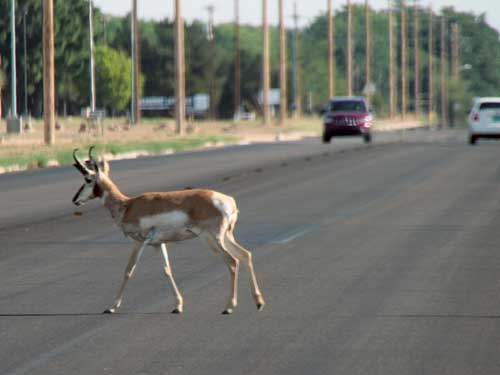
Eventually all three made it safely across the road.
We made our way through a variety of scenery as we headed west on Highway 380.



Picacho an unincorporated community in Lincoln County, only had a population of 13 back in 2014. It's post office (pictured here) opened in 1891.

Hondo was slightly bigger with a population of around 1,000. It was founded by Spanish settlers from the Rio Grande valley in the 1880's after the U.S. Army had suppressed the local Apache. It was originally called La Junta (the junction) because the rivers Rio Bonito and Rio Ruidoso joined here. Later it was renamed Hondo (deep) after the river.


Exquisite signs decorated the numerous ranch entrance gates.

Most of the images depicted life on the range.
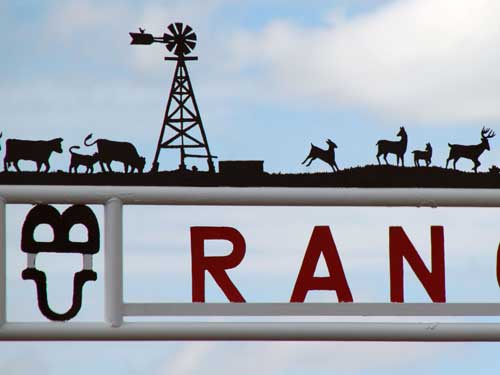
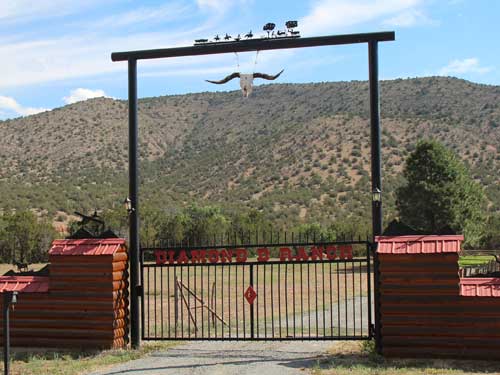


Roping a steer



Then again, other images left us with a multitude of questions!



A cholla cactus in bloom

A random graffiti-covered rock
Our route then took us by the town of Lincoln. The old town of Lincoln has the 'honor' of having once been the most violent town in the wild west. It was the location of the Lincoln County War, which took place from 1878 to 1881. It all started when John Tunstall, a wealthy Englishman, decided to open a store here and compete with the monopoly established by L.G. Murphy and James Dolan. Murphy gathered together a group of gunman known as "The Boys" who promptly murdered Tunstall. Unfortunately, Tunstall had friends too, including Billy the Kid, Alexander McSween and cattle baron John Chisum. They created their own group called "The Regulators." County residents chose sides and the war began.
For killing Sheriff Will Bardy here, Billy the Kid (aka William H. Bonney) was sentenced to hang in early 1881, but he managed to escape his prison, the Lincoln courthouse, killing two guards in the process.


John Tunstall, Billy the Kid, and L.G. Murphy (far right) with his "Boys"
To read about where Billy the Kid grew up in Silver City, visit my
Fall Escape trip
|


Entering Lincoln
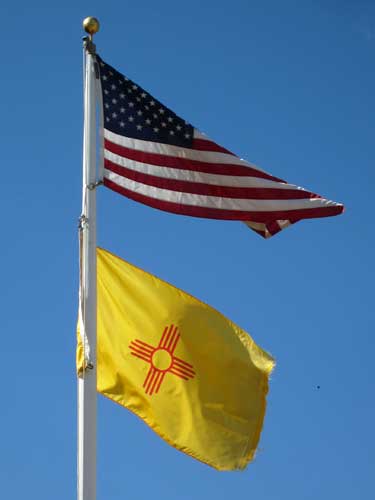

We stopped at the Anderson-Freeman Visitor Center and Museum. Unfortunately the entrance ticket included visitation to many of the buildings of town... a great deal if one planned to see all of them, but not such a great deal to just quickly browse this one.
So we just drove slowly through the town, seeing what we could see from the road.

This was the first courthouse when Lincoln County was established in 1869. It now belongs to the church next to it...

... which is La Iglesia de San Juan-Bautista (San Juan Mission) from 1887.

This is the torreon...

... which the sign explains.

This was originally the Murphy-Dolan store, built in 1874. It later became the Lincoln Country courthouse... the same one Billy the Kid escaped from.
We continued on, with the sky above as spectacular as the scenery below.

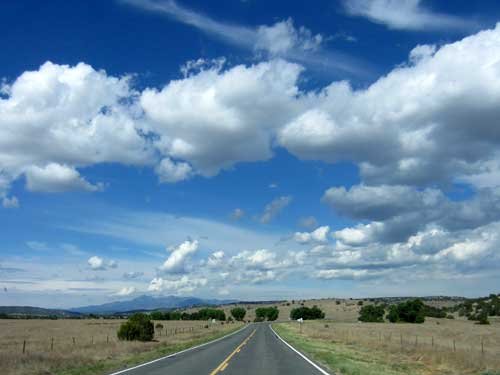

We pulled over at a small rest stop that featured Smokey Bear. Apparently he was found in these nearby mountains as a cub!



"Remember... Only YOU Can Prevent Forest Fires"



Left to right: West Mountain (elevation 8,778 ft), Capitan Gap, Capitan Mountains
return • continue

